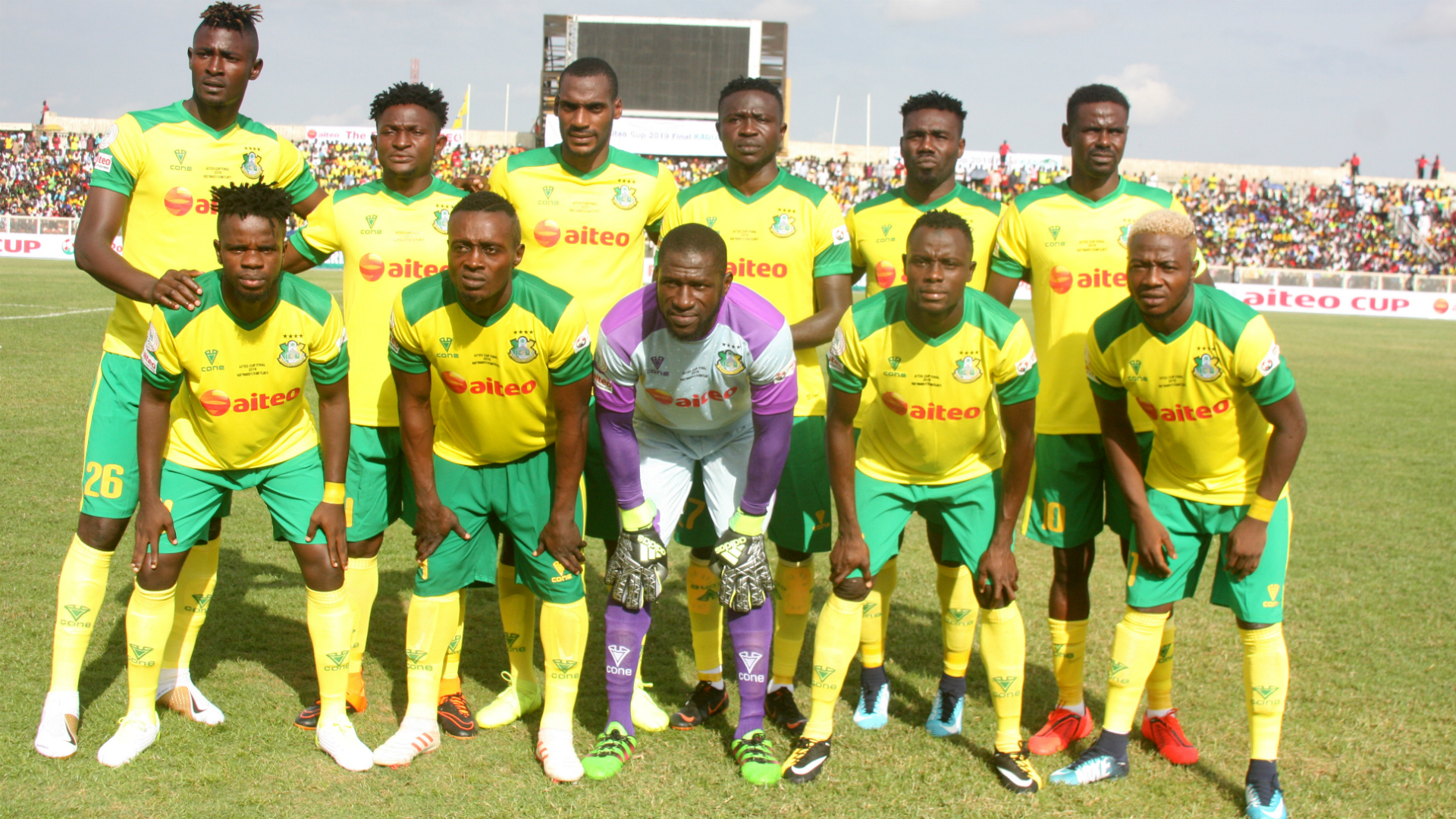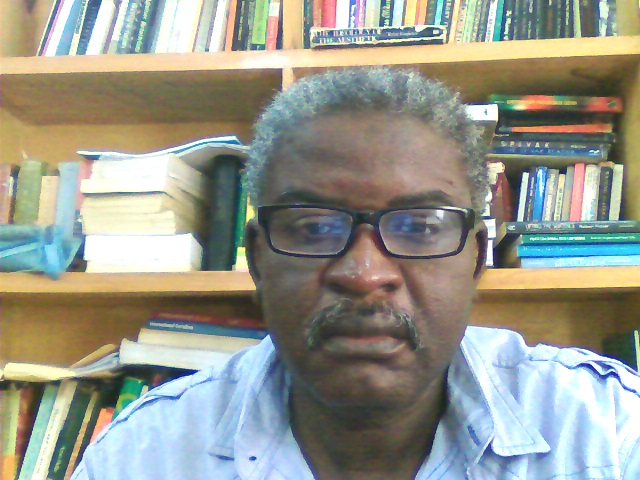Opinion
FIDAC asks Kano Govt to declare state of emergency on water

ACUTE SHORTAGE OF WATER SUPPLY IN KANO METROPOLITAN, SUB-REGIONAL AND RURAL AREAS
Background
Water is one of the necessities for human lives and its acute shortage makes life difficult for many people and communities. Based on this, United Nations General Assembly (2010) made a resolution that everyone has the right to sufficient, continuous, safe, acceptable, physically accessible, and affordable water for personal and domestic use.

Despite Kano State Government unflinching commitment to ensure steady water supply as reflected in 2024 budget approval of 14,240,594,262.01 for the Ministry of Water Resources, adequate provision of pipe bone water still remains a mirage in the state. For instance, in March 24, 2024 Solace Base- a Kano-based online news outlet-reports that Danya and Kyallin-Bula villages in Bichi Local government have been without water for over 40 years. It also reported in 15th May, 2023 that people and cattle drink from the same well in some places at Gaya Emirate. To add to this, a research by Barau (2012) found out that 97 per cent of households in Kano state drink contaminated water. Present public outcry for acute scarcity of water supply all over the state coupled with expensive nature of the water petched and sold is no longer news. It fact, it is a household name, known by all and sundry. In almost all social media platforms the issue remains a major topic of discussion.
Observations on the causes of acute shortage of water supply in Kano State
While commending the effort of Kano State Executive Council approval-as contained in the extract of its 13th weekly Council meeting- for reconstruction of Kura – Kubarachi – Madobi Road and the failed Kubarachi Bridge in Kura and Madobi Local Government Areas in the sum of 11,976,727,228.30 billion naira, proposed water supply package tagged ‘Abba Kabir Yusuf 2024 Reach Out Water Supply Project Phase I’ at the cost of 319,308,407.82 million naira, payment of supply of water treatment chemicals for the month of November, December, and January at the cost of 387,000,000.00 million naira and award of contract for water pipeline extension to Na’ibawa Eastern Bypass Layout and Unguwa-Uku Yan-Awaki communities in the sum of 153,000,000.00 million naira, our findings revealed the following as challenges causing acute water supply in Kano state:
a. Insufficient number of water treatment plants and sadly the existing ones for Kano Greater Water Supply Scheme, Tambura, Bagwai and Shanono Water Schemes are dilapidated.
b. Faulty nature of pipelines supplying water to various places in the state.
c. Power failure and non-availability of diesel to power the machines in the areas where water treatment plants are cited.
d. Budgetary fund releases is untimely and inadequate.
e. Non-remittance of LGAs monthly water supply contributions to Kano Water Board.
f. Poor maintenance of existing boreholes and hand pump wells.
g. Failure of government to sink new boreholes and hand pump wells in strategic locations where the demand is high but with less supply.
h. Poor rehabilitation of water infrastructure all over the state.
I. Inadequate oversight by the responsible government MDAs and legislatures.
j. Government failure to leverage on its existing policy guidelines to reclaim and restore open spaces for increased water percolation below the surface as well as creating and restoring green spaces.
k. Inadequate public sensitization to embrace collaborative consumption of water and promote its recycling.
l. Non-inclusion of knowledge-based water governance in the water supply policy guidelines.
m. Inadequate staffing, training and provision of other incentives for the existing ones.
Recommendations
Government
Based on the above challenges, the state government should to do the following:
a. We urge the state government to declare state of emergency for water supply in Kano State.
b. Kano state governor should, as a matter of public importance, authorize immediate withdrawal from Contingency Fund Account to ameliorate acute water supply in the state.
c. Government should rehabilitate all water infrastructures in the state for equitable rural-urban water security.
d. As a corporate social responsibility, companies and other business ventures operating in Kano are urged to help in reducing water shortages, leakages and wastages through rehabilitation of water infrastructure, repair of faulty hand pump wells and boreholes for equitable water security.
e. Philanthropies and well-meaning individuals are equally urged to extend similar gesture to the good people of Kano State.
f. Government should leverage on its existing policy guidelines and instrumentalities of law, where necessary, to reclaim and restore open spaces for increased water percolation below the surface as well as creating and restoring green spaces.
g. Rural Water Supply and Sanitation Agency (RUWASA) should develop rural water supply clusters for maximum efficiency.
h. Public sensitization to embrace collaborative consumption of water and promote its recycling.
i. In order to provide steady power supply and cut down diesel expenditure for Kano Greater Water Supply Scheme, Tambura, Bagwai and Shanono Water Scheme facilities, the State government should ensure speedy completion and commissioning of Kano Independent Hydro Power Station.
j. There should be collaboration and partnerships between Kano state government and Hadeja Jama’are.
k. Kano state government should strengthen Kano state Water Board and RUWASA through human resources development and adequate provision of facilities.
Kano State House of Assembly (KSHoA).
a. For fact-finding of the genesis of acute shortage of water supply, KSHoA should summon Honourable Commissioner Ministry of Water Resources and MDs of both Kano State Water Board and RUWASA.
b.KSHoA should pass a resolution urging Kano state government to declare water supply state of emergency.
c. Since Kano is the most populous state and centre of commerce in Nigeria, KSHoA should liaise with federal law-makers to seek for intervention of Federal Ministry of Water Resources.
d. Members KSHoA should tailor their constituency projects towards rehabilitation of faulty pump wells and boreholes and where necessary construction new ones.
e. KSHoA should expeditiously enact law to make water resources budgetary provisions among the first line charges.
f. The house is also urged to increase ministry of water resources annual budgetary allocations and embark on oversight to ensure prompt releases and utilization.
g. LGAs should be mandated by KSHoA to urgently rehabilitate boreholes and hand pump wells in their areas and sink new ones in a strategic locations where the demand is high but with less supply.
h. Kano state House of Assembly should ensure adherence to Kano State Water Resources Law which limit arbitrary construction of hand pump wells and boreholes in the state.
I. In order to provide steady power supply and cut down diesel expenditure for Kano Greater Water Supply Scheme, Tambura, Bagwai and Shanono Water Scheme facilities, KSHoA should pass a resolution to ensure speedy completion and commissioning of Kano. ndependent Hydro Power Station.
j. LGAs where sub-regional water scheme are cited should be urged by the KSHoA to make fund provision in their annual budget so as to ensure sufficient, safe, accessible, and affordable water supply in villages and towns for personal and domestic use.
Conclusion
Kano state Internally Generated Revenue (IGR) will improve through monthly water bills collections if the pro-active measures articulated in this write-up are taken into Consideration. Concomitantly, Kano State Water Board including RUWASA can have financial autonomy through water bills remittance. Indeed expansion of water supply is possible through rehabilitation of faulty water treatment plants and machines as well as procurement of new ones. Completion and commission of Kano Independent Hydro Power Station will also provide alternative source of power for uninterrupted water supply in the state. Finally, it is our prayer that the recommendations outlined above will be adopted with a view to ensuring sufficient, continuous, safe, acceptable, physically accessible, and affordable water supply for personal and domestic use in Kano State.
Dr. Abdussalam Muhammad Kani, fcfa
Executive Director, FIDAC kaniabdussalam@yahoo.com +2347033270725

Opinion
The need to restore the prestige of Kano Pillars FC

Isyaku Ibrahim
There is no doubt whenever you talk about Enyimba of Aba in Nigeria’s top flight who won the competition nine time, the next team that will come to your mind is Kano Pillars that lifted the trophy on four good occasions. But nowadays,it seems the Kano darling is losing its prestige, recognition and above all popularity in the local league.
This was as a result of lack of total commitment, determination, tenacity, patriotism,diligence and seriousness which the side was known for in the past.

To say the fact, the pyramid City lad was previously rated among the traditional teams in the top flight as they have established and tested players that would not disappoint their teeming fans no matter where they are playing.
It was based on this late Rashidi Yekini while watching the team at Adamasingba Stadium now Lekan Salami Stadium in Ibadan said if he was to play for a local team he would prefer to lace his boot for Kano Pillars ahead of others.
The reason he Said was simply due to excellent free flow football of the team but now it seems that has gone for bad.
When the club was established as early as 1990 among the objectives behind was to boost the name of the state through football and beside that win trophies with a view to competing favourably with others.
While those behind the idea should be commended to a large extent for their foresight in that respect in view of how the team is now a household name in the round leather game countrywide but there is the need for a collaborative effort with a view to normalising things in the ancient city side as the club has now stepped down from its aforementioned aims and objectives.
It is painful that the team’s main priority nowadays was not to lift the league as the case was previously but to survive relegation which was baseless,laughable and nothing to write home about considering their past experience particularly when they were based at Sabongari Stadium.
Definitely,this season is almost over as Remo Stars are as good as being crowned the winners of the event
The best option for Sai Masu Gida is to start early preparation for the upcoming season through putting their house in order aimed at restoring their winning culture as the teeming fans are tired of flimsy excuses on the reason behind their lack lustre performance year in year out.
Honestly, what they are basically hoping for is to see the club matches theory with practice through grabbing the trophy or at least earning one of the three continental tickets in the country.
optimistically this is achievable with the full support of Governor Abba Kabir Yusuf coupled with that of his laborious and submissive Deputy Comrade Aminu Abdulsalam, good management, superb technical crew and the support of ardent fans who are always with the side in either thick or thin.
Ibrahim is a Director Public Enlightenment at Kano State Ministry of Special Duties.

Opinion
In defence of Prof Abdalla Uba Adamu’s beautiful quip on Kano – IBK

Prof. Ibrahim Bello-Kano (IBK)
Double Professor Uba Abdallah Adamu has angered many non-Kano people resident in Kano by his famous, widely circulated quip, an aphoristic description of Kano in which says the anyone tired of (living in) Kano is tired of life. Prof Adamu’s appraisal of Kano is based on a sound premise and a powerful emotional logic. Prof. Adamu’s comment has a powerful pedigree. On the arguments of the highly acclaimed French sociologist and space theorist, Henri Lefebre in “The Production of Space” (1974), it can be shown that Kano, especially the city and the metropolitan area, has three characteristics, typical of the greatest cities in the world since Antiquity:
1. It is a conceived space (an urban area, complete with a series of interlacing and interloping and interlocking urban designs since the 9th century). Kano was already a city and an urban space well before 1903. It’s one of the oldest urban areas in the Sudan.

2. It is a lived space, complete with the everyday experiences of its inhabitants and their emotional identification with it. Hence the many “quarters of the city”— from Alkantara, Alfindiki, Ayagi, to Mubi and Gwangwazo and beyond those.
3. Kano is also a practiced/practised space, with its inhabitants, visitors, and emigré population working to “practice up” the city in their daily lived experiences and within its urban and emotional spaces. That’s the truth of Prof. Abdallah Uba Adamu’s hyperbolic reference to Kano as a barometer of happiness or depression.
Prof Adamu is also correct in that most immigrants to the city never leave it, even if their last name may indicate other towns or cities. Already, Kano is one of the most truly cosmopolitan cities in Nigeria, surpassed only by New York, London, and Abidjan. In 1958, almost a decade before Lefebre’s book, the philosopher of science and urban studies, Gaston Bachelard published “The Poetics of Space” in which he argues that to live, or to choose to live, in a place, say the Kano metropolis, is already to enact an emotional act, and an existential event, in and for which Kano is already a resonant space of intimacy, or an intimate place of lived subjectivity. This is the case because one cannot live in Kano, even for a brief period, without (seeking to) creating a home, a nest, and an intimate space of “Kano beingness” or a Kano-based “being- in-the world”. That’s why Kano evokes and resonates with a strong emotional identification with it. When I was about 8 years old, I was told, on visiting the Dala Hill, that God had planned to create a holy city in Kano, but a dog urinated on the hallowed ground, and that’s how the divine plan was moved elsewhere. Of course, that story is clearly apocryphal, yet it shows how the Kano people are intensely proud of their places and spaces. So, Prof. Abdullah Uba Adamu’s hyperbolic and surreal description of Kano is essentially correct and pleasingly poignant. Many emigré groups are unhappy with his remarks, but if you live in a place, earn a living in it, or draw opportunities of all kinds from it, then you have got to love Kano, the most romantic of cities, a city full of dreams, aspirations, emotional highs and lows, and learn to identify with its fortunes. Kano, the city of gold and piety, recalcitrance and hope, modern politics and ideological contestations; the city of majestic royalty; the city of women and cars, as Shata once described it. Kano… the great Entreport. Kano, your name will endure through the ages. Cheers.
Ibrahim Bello-Kano (IBK) is a Professor of English at Bayero University, Kano.

Opinion
Kano: My City, My State

By Huzaifa Dokaji
Kano is not a place you reduce to a headline or dismiss with a stereotype. It is a city with too many layers for that- too much memory, too many voices. This is the Kano of Muhammadu Rumfa, the ruler who gave it form and vision, and of Ibrahim Dabo, the scholar-king. The Kano of Kundila and Dangote, where wealth meets ingenuity.

It is the Kano the British once described as the ‘London of Africa,’ the Tripolitans praised as ‘a city like a thousand others’, each one magnificent—and its own people, knowing its complex social and ideological chemistry, named tumbin giwa, the intestine of an elephant: vast, winding, and full of hidden depths.
Kano has always carried many lives at once. It is the home of Shehu Tijjani Na Yan Mota and the sanctuary of Abdullahi dan Fodio when he felt the revolution had been betrayed. It is Madinar Mamman Shata and the home of Aminu Ala, the author of the philosophical Shahara and masterfully composed Bara a Kufai. This is the same Kano that made Dauda Kahutu Rara, the master of invective lyrics, and Rabiu Usman Baba, the Jagaban of Sha’irai.
Here, contradictions do not cancel each other, they coexist. It is the city of yan hakika and yan shari’a, of Izala and Tariqa, of Shaykh Rijiyar Lemo and of Shaykh Turi. It is the Kano where people will argue passionately about doctrine, then share tea afterward. Where silence and speech, mysticism and reform, are all part of the same long interesting yet boring conversation.
This is the Kano of the diplomatic Emir Ado Bayero and combatant Muhammad Sanusi II. Of Rabiu Kwankwaso, the red-cap-wearing jagora, and of the agreeable Ibrahim Shekarau. It is that same Kano of the incorruptible Malam Aminu Kano and Dollar-stuffing Ganduje. The cosmopolitan city of Sabo Wakilin Tauri and of the saintly Malam Ibrahim Natsugune.
If not Kano, then what other city could birth Barau Kwallon Shege, the bard of the profane, and welcome Shaykh Ibrahim Nyass, the towering saint of the mystics? Where else but Kano would you find Shaykh Nasiru Kabara- scholar and Sufi master- sharing the same cityscape with Rashida dan Daudu and all the remembered and forgotten Magajiyoyin Karuwai? This is the Kano of yan jagaliya and attajirai, of the sacred and the profane, the pulpit and the street. The Salga and of Sanya Olu and Ibedi streets. Kano has never pretended to be a city of one truth, its greatness lies in the multitude it carries.
So when people speak carelessly about Kano, they miss the point. Kano is not a relic. It is alive. It debates itself. It holds its tensions with pride. And like Adamu Adamu said, “the story of this enigmatic city is simple and straight backward – and , in the end one can only say Kano is Kano because Kano is Kano – and that’s all; for; it is its own reason for being.”
You don’t explain Kano. You respect it.
This was first published on Huzaifa Dokaji’s Facebook account.













